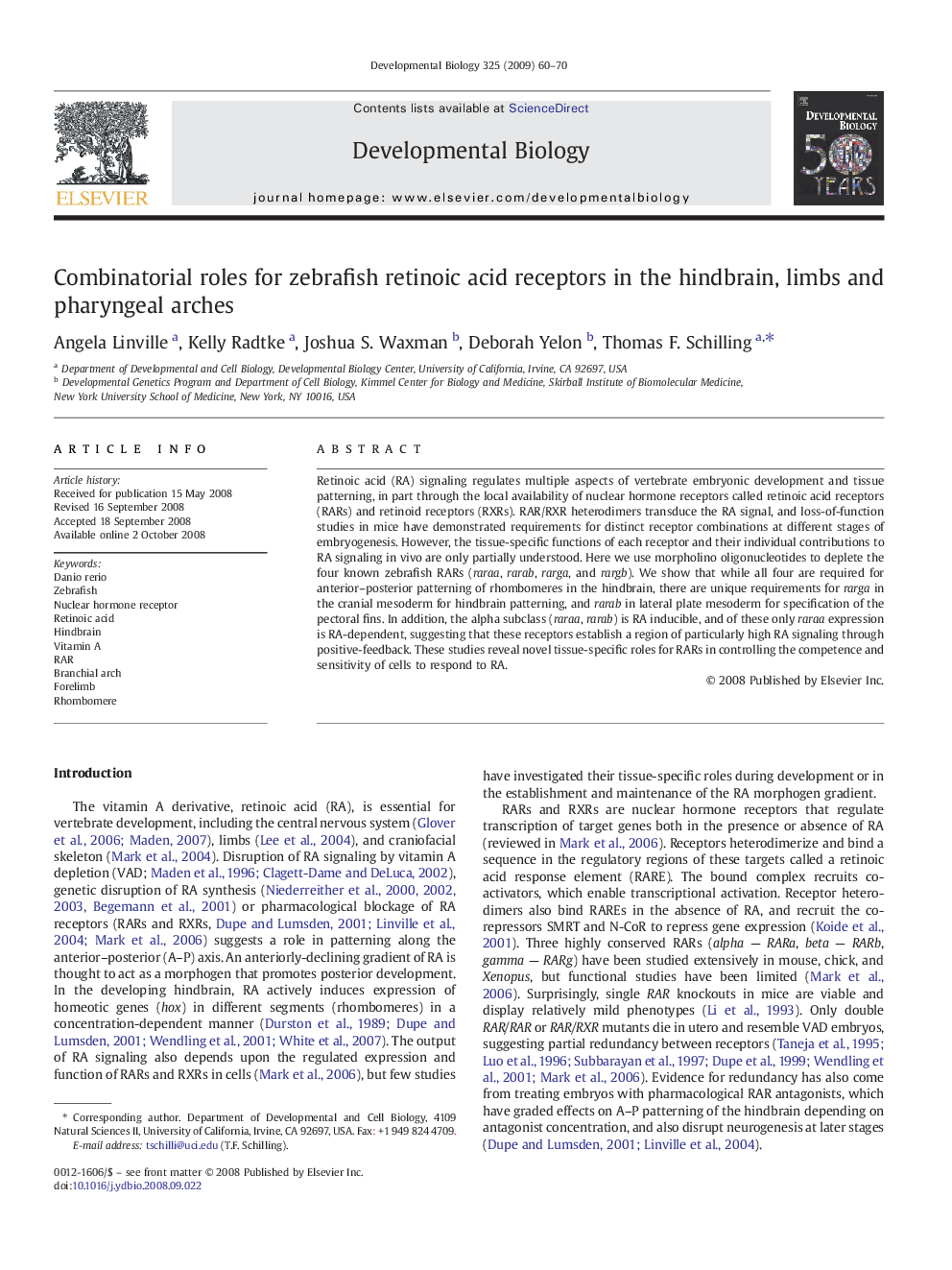| Article ID | Journal | Published Year | Pages | File Type |
|---|---|---|---|---|
| 10933414 | Developmental Biology | 2009 | 11 Pages |
Abstract
Retinoic acid (RA) signaling regulates multiple aspects of vertebrate embryonic development and tissue patterning, in part through the local availability of nuclear hormone receptors called retinoic acid receptors (RARs) and retinoid receptors (RXRs). RAR/RXR heterodimers transduce the RA signal, and loss-of-function studies in mice have demonstrated requirements for distinct receptor combinations at different stages of embryogenesis. However, the tissue-specific functions of each receptor and their individual contributions to RA signaling in vivo are only partially understood. Here we use morpholino oligonucleotides to deplete the four known zebrafish RARs (raraa, rarab, rarga, and rargb). We show that while all four are required for anterior-posterior patterning of rhombomeres in the hindbrain, there are unique requirements for rarga in the cranial mesoderm for hindbrain patterning, and rarab in lateral plate mesoderm for specification of the pectoral fins. In addition, the alpha subclass (raraa, rarab) is RA inducible, and of these only raraa expression is RA-dependent, suggesting that these receptors establish a region of particularly high RA signaling through positive-feedback. These studies reveal novel tissue-specific roles for RARs in controlling the competence and sensitivity of cells to respond to RA.
Keywords
Related Topics
Life Sciences
Biochemistry, Genetics and Molecular Biology
Cell Biology
Authors
Angela Linville, Kelly Radtke, Joshua S. Waxman, Deborah Yelon, Thomas F. Schilling,
